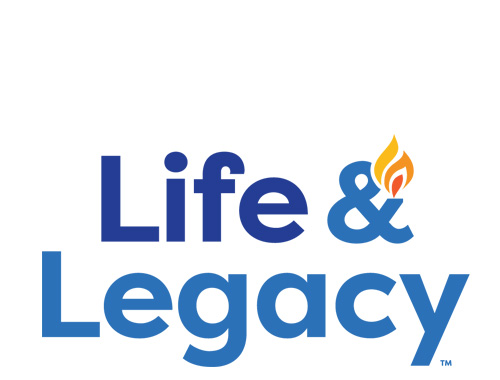2025 Israel Trip—The Impact of a Schechter Education
By: Rabbi Jonathan (Yoni) Berger
2025 Israel Trip—The Impact of a Schechter Education
“Are we going in the right direction?” This was the main question I wanted to answer when I chose to staff the 8th Grade trip to Israel this year. And by “we,” I mean Schechter, which I lead; the American Jewish community, to which I’ve dedicated my professional life; and Israel, my beloved second homeland. In future columns, I hope to write about the current direction of American Jewry and the situation I’ve found in Israel; first, though, I want to talk about Schechter.
Steven Covey has a famous way of illustrating the difference between management and leadership. A group of workers was cutting its way through a forest. “Stop!” called the leader. “But we’re making amazing progress!” replied the manager. “Yes, but we’re going in the wrong direction!” said the leader. At Schechter, much of my time and energy is spent managing the school leadership team, supporting their work, and helping them make progress. I also need to function as a leader, and so whenever possible, I try to zoom out and make sure we are heading in the right direction. Traveling to Israel with our 8th grade has offered me a chance to do just that.
I wanted to find out: What do our students know, and what are they able to discover as they make their way around the country? What connections can they make to previous knowledge, and to the land of Israel, and to Jewish history, to the Jewish people, to God? What personal meaning can they create? And finally: after all our years of educating and inspiring them, what kind of kids are they, and who are they becoming?
Tour guides who are used to working with Birthright groups, whose participants often lack a Jewish education, are always amazed at what 13- and 14-year-old day school students know. Our eighth graders can talk with equal fluency about modern Israeli cities and about the first and second Temples. They know about King Herod’s paranoia, and how he built Masada and the Second Temple; they also know about Herzl and Ben Gurion. As a result, instead of starting with the ABCs of Israel, our tour guides get to bring this knowledge to life. Every day, metaphorical light bulbs go off. “Oh—we learned about that in sixth grade!” “That’s what Rabbi [Chatinover] told us about!” “We read an article about this in Hebrew class!”
It’s not just Jewish history learning that comes alive here. To anyone with lingering doubts about whether a Schechter education means sacrificing quality general studies, I can only say that 15 minutes with our almost-graduates would dispel your concerns. When we are in the north of Israel, and the guide talks about geology, our students demonstrate fluency in the language of igneous rocks, plate tectonics, and more. When hearing about the Jewish return to Israel, and the relationships between Israel and the Bedouins, they were able to compare and contrast how the United States treated Native Americans with how Israel has treated Bedouin tribes—and they did so with sophistication and understanding. Every one of their teachers at Schechter had a role in preparing them for this trip, for high school, and beyond.
One powerful moment for me came at the very beginning of our tour of Yad Vashem. Before entering the main exhibit building, our guide asked our group, “How many of you know where your families are from?” And every single hand went up.
Taken narrowly, this was a question that most American children could answer at some point. It’s common to have a family history project in elementary school, where students research their family origins by interviewing an older relative, or looking online at ship manifests from Ellis Island or the Port of Baltimore. But it’s also common for that knowledge to be forgotten a year later, because after the project is done, the knowledge isn’t used again. But our students’ identity and knowledge of their origins doesn’t just come from a single project. When they raised their hands, they didn’t just mean, “I know that my family is from Poland/Lithuania/Iran.” They truly know where they come from; their sense of self is deeply rooted. We saw this everywhere we went.
Similarly, they had real spiritual moments during tefillah, not just at places like Masada and the egalitarian section of the Kotel, but also at our kibbutz up north or in the desert. Their fluency with the prayerbook allowed them to jump right into a moment of holy connection.
They connected old knowledge to new. They connected themselves to their past. They connected to God in their own way. And the most powerful connections they made were with the story of Israel, on Israel’s holiest days: Yom Hazikaron (Memorial Day) and Yom Ha’atzma’ut (Independence Day). They didn’t just watch Israelis mourn; when our Israeli staff shared stories of loss, our students mourned with and alongside them. They weren’t just spectators as Israelis celebrated the 77th birthday of the state; they felt the joy too, and rejoiced with them. They felt a powerful, genuine connection.
I came on this trip with many small questions (Are our students learning to think? Are they developing a rich and rooted sense of self, building connections, and growing into strong, kind, confident human beings?) that boiled down to one: The progress they’ve been making—has it been in the right direction? The answer was evident on every day of this trip. Our students are charting their own paths, and each path is inspiring! I’m so grateful to our teachers for helping them learn and thrive; I’m so proud of our students. They are becoming all we could want them to be.
SEARCH HEAD OF SCHOOL BLOG
ARCHIVES
Solomon Schechter Day School
of Greater Hartford
26 Buena Vista Road
West Hartford, CT 06107
© Solomon Schechter Day School of Greater Hartford | Site design Knowles Kreative




